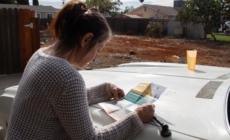-
The search for Hannah Kobayashi finally ends after a month of tragedy and uncertainty - 11 mins ago
-
Diddy Accused of Rape, Assault in Lawsuits Filed by Three Men, reports - 29 mins ago
-
How Covid Can Change Your Gut - 30 mins ago
-
Column: Is it time for California’s Latino Legislative Caucus to let in Republicans? - 51 mins ago
-
Why Blocking The Onion From Buying Infowars Was ‘Right Decision’—Attorney - about 1 hour ago
-
European Central Bank Cuts Interest Rates as the Economy Weakens - about 1 hour ago
-
Two arrested in ‘pig butchering’ that cost San José man $170,000 - 2 hours ago
-
Churches Will No Longer Provide Sanctuary for Migrants Under Trump - 2 hours ago
-
How America Turned Allies into Enemies in Afghanistan - 2 hours ago
-
What sleeping in prison is like: Moldy beds, bright lights, 24/7 noise - 2 hours ago
‘Exceptional’ Ancient Burial Ground With Elite Warrior’s Grave Uncovered
Archaeologists have uncovered an “exceptional” ancient Celtic burial ground and an early farming settlement from the Stone Age in the Czech Republic, among other finds.
The Archaeological Center of Olomouc announced that researchers made the discoveries during rescue excavations in the Přerov District of the Olomouc Region, located in the eastern part of the country, ahead of construction works.
The “unique” and extensive Celtic burial ground is thought to date back to the 3rd-2nd centuries B.C., according to the archaeologists. In total, 33 cremation graves were identified at the site, making it one of the largest known in the wider region.
“This is an exceptional find, as Celtic graves from other sites are usually skeletal and occur in lower numbers. Here we managed to uncover several dozen cremation graves, which is truly unique,” lead archaeologist Marek Kalábek said in a statement.
The site is dominated by the grave of what appears to be a Celtic warrior. He was buried with his iron spear, belt and sword stored in a leather scabbard, which indicates that the individual was a member of the elite in the local community.

Archaeological Center of Olomouc
While this grave stands out due to its rich furnishings, the others were much more modest. They primarily consist of small sunken pits in a circular or rectangular shape, sometimes containing fragments of metal artifacts and ceramics. These simple cremation graves shed light on the lives and deaths of the less affluent members of the ancient Celtic community.
“Thanks to these findings, we are getting unique information about those whose existence we have so far little evidence for,” Kalábek said.
The Celts conducted the cremation rite with great skill, which is why only small fragments of skeletal remains have been preserved at the site.
Besides the Celtic burial ground, the team also discovered a number of medieval Slavic graves containing skeletal remains from the 9th and 10th centuries. These finds date to the Great Moravian Empire, a significant early medieval Slavic state that existed in central Europe. This culture is associated with deep chamber graves, which were found at the Přerov District site.
“According to the Christian burial method, the body was placed in the grave with the head facing west, with the lower limbs stretched out and mostly without rich equipment,” anthropologist Lukáš Šín said in the release.
Some of the objects found among these graves include small pieces of jewelry, iron knives, ceramic vessels and flint fire-making sets.
“They were probably farmers who were not very rich, which is evidenced by the modest equipment, for example a small bronze earring that we found with one of the skulls,” Kalabek said.
But the archaeologists did make a remarkable discovery—a preserved wooden bier in a woman’s grave. A bier is a platform or frame used to support a coffin or corpse during funerary ceremonies, such as burials or cremations.
“This is an extraordinary well-preserved object considering that wood is not usually preserved in our conditions,” Šín said.
Investigations in the area also uncovered evidence of an early farming settlement that dates back to around 5000 B.C. during the Neolithic period or New Stone Age. At the site, researchers identified the remains of long houses, storage pits and furnaces, as well as hundreds of objects.
“In addition to numerous ceramics, we also discovered chipped flint tools, fragments of ground axes and stone mills for crushing grain. The found artifacts help us better understand the everyday life of prehistoric society,” Kalábek said.
Do you have a tip on a science story that Newsweek should be covering? Do you have a question about archaeology? Let us know via science@newsweek.com.
Source link















